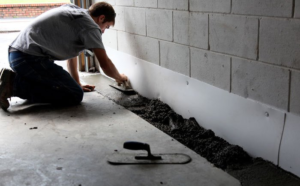Auto repair is a complex business. It involves a lot of processes and procedures to manage employees, customers, and vehicle repair.
Routine maintenance items like oil changes can help prevent expensive breakdowns in the future, so they’re important to keep up with. Some shops offer in-house financing to cover the cost of maintenance.

Check the Tires
Tread wear is a good indicator of how long you can continue to use your tires. Heavily worn tread prevents the tire from performing as it should, and it can even lead to a loss of control and unsafe driving conditions. Fortunately, checking for tread depth is easy. All you need is a spare penny and a few minutes to check your tires. Simply insert a penny head-first into the tire’s tread. If you can see the top of Abe Lincoln’s head, your tread is getting thin and you need to visit a mechanic for a replacement.
You can also check your tread using the built-in treadwear indicators molded into most DOT-regulated tires. These appear as smooth banks in the tire’s grooves and are flush with the surrounding ribs when the tread is down to two-thirty seconds (2/32) of an inch or less.
When examining your tire tread, pay special attention to the center and outer edges. If the edges seem to be wearing down faster than the center, it could indicate under inflation, a wheel alignment issue or some other problem.
Look at the sidewalls for any damage as well. Chunks of rubber missing from the sidewall may indicate a puncture, and deep abrasions or bulges in the sidewall can be signs of impact with road hazards that could result in sudden tire failure. If you spot any of these issues, contact a service professional at one of our Basil Family Dealerships for an evaluation. Proper tire inflation and regular wheel balancing can help extend your tires’ life.
Check the Battery
As you know, the performance of lithium-ion batteries degrades with each charging cycle. Luckily, there are several online battery health checkers you can use to see how yours is doing. If it’s getting to the point that you’re always searching for outlets and it takes a while to charge, it might be time to have it checked or even replaced.
If you decide to do it yourself, make sure to use safety equipment and work in a well-ventilated area. Automotive batteries contain sulfuric acid, which can burn skin and irritate eyes. It’s also important to clean battery terminals regularly.
Check the Oil
Engine oil is the life’s blood of your car’s engine, lubricating the internal moving parts to keep them cool and clean, and helping the moving parts move with less friction. Keeping the right amount of oil in your vehicle is one of the easiest and most important maintenance tasks that you can do for your automobile.
Generally speaking, the best time to check your oil is after driving your car for a few minutes and before heading to your destination. This will give the oil a chance to settle in the crankcase and provide you with an accurate reading. Also, it is a good idea to avoid overfilling the vehicle’s oil, as this can cause pressure issues inside the engine.
To check your oil, you will need a lint-free rag and a bottle of engine oil that is appropriate for your vehicle. Make sure to read the owner’s manual to find out where the oil dipstick is located, and be prepared to pop the hood of your automobile.
Once you have the dipstick, pull it out of the tube and wipe it off on a rag before pulling it back in. Then, you can look at the two marks on the dipstick that indicate the minimum and maximum oil levels. If your oil is low, add some by following the directions on your automobile’s dipstick. If you are not sure how to do this, call our Service Department and we will be happy to assist you.
Check the Tire Pressure
The tires support the weight of the car and have to bear some of its acceleration and braking force, so it’s important to keep them properly inflated. Overinflated tires can cause a bumpy ride, and under-inflated ones can lead to premature wear of the sidewalls and lower fuel economy. You can easily check the air pressure by using a tire pressure gauge, which you can purchase at any auto parts store or borrow for free at some gas stations.
When checking the pressure, it’s best to do so when the tires are “cold”—first thing in the morning or a few hours after the vehicle has been parked. Warm tires have higher pressure than cold ones, and friction from driving heats up the air inside them and raises their pressure even more.
If the gauge reading is too high, you can wiggle the tire (many have a pressure-release valve) or use the gauge’s built-in release mechanism to let some air out. Then, you can add more air until the gauge reads at the recommended PSI.
Recommended tyre pressures for different operating conditions are usually available in the vehicle handbook or on a sticker mounted on the driver’s door frame. Also, don’t confuse the’max psi’ figure on the sidewall of the tire with its recommended pressure: these are two very different things! The’max psi’ marking indicates the maximum safe air pressure, while the recommended tyre pressure is the pressure at which the tyre will be at its most optimal.
Check the Brakes
Whether you’re performing an inspection of your own vehicle or working on a customer’s car, the brake system is one of the most important safety components of the entire vehicle. If you notice a spongy feel to the brake pedal or hear unusual noises while braking, it’s essential to have these problems addressed by a professional technician.
The most common sign of a faulty brake system is a noticeable decrease in the level of brake fluid in the reservoir. This compact, transparent container is usually located under the hood and allows you to monitor the fluid levels. A noticeable decrease within a short period of time indicates that there’s a leak somewhere in the brake lines, calipers, or wheel cylinders.
If you suspect there’s a leak, check beneath the vehicle to see if there’s a puddle of brake fluid on the ground. Then, crawl underneath the vehicle and locate where the leak is coming from by examining the brake lines for cracking or corrosion. The calipers and wheel cylinders should also be examined for signs of internal failure.
If you notice that the calipers or rotors are worn past their recommended replacement, this can cause a spongy feeling to the brake pedal. Additionally, the brake linings must be renewed if they’re leaking hydraulic fluid or grease, as this will lead to unbalanced braking and potentially dangerous consequences. A spongy brake pedal can also indicate that there is air in the brake system, which is typically easy to resolve by bleeding the brakes with a special tool.
Check the Windshield
The windshield is a critical safety feature, helping to protect drivers in the event of an accident by preventing the car’s passengers from being ejected. It also helps to improve the driver’s visibility, so it’s important that drivers check their windshield for damage on a regular basis.
Depending on the type and location of windshield damage, it may be possible to repair the glass rather than replace it completely. However, the windshield must be structurally sound in order to function properly. Consequently, any crack or chip that compromises the structural integrity of the windshield will require replacement.
Windshield damage often results from debris such as pebbles or rocks flying off the road. These can shatter the front windshield and leave behind chips in the glass. While a small chip can seem insignificant, it’s best to have these repaired as soon as possible to prevent the damage from spreading further and compromising the windshield’s strength.
The windshield is made from laminated glass and consists of several panes of glass separated by a layer of plastic. The windshield can withstand the force of an impact from a rock or other debris, but it will eventually weaken and shatter if enough pressure is applied. In addition, the windshield needs to be structurally sound in order to prevent a passenger from being ejected in the event of an accident. In addition, if your state requires vehicle inspections, the windshield cannot have pits, cracks, or chips greater than 1.5 inches in diameter or three inches long, and it must not be located in the driver’s line of vision.




